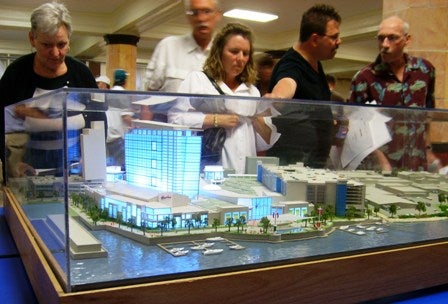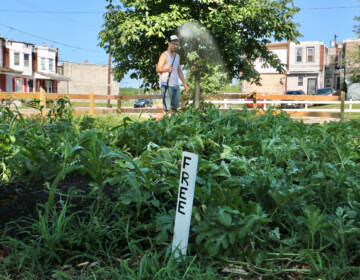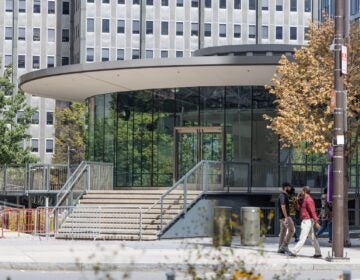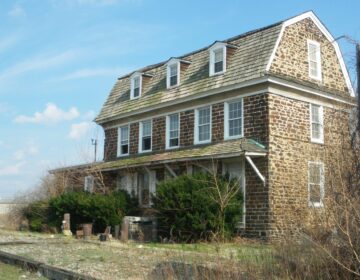Army Corps: We won’t exclude tribes again

April 1
By Kellie Patrick Gates
For PlanPhilly
The U.S. Army Corps of Engineers has finished investigating its Philadephia District’s exclusion of Native American tribes from a federally required historic review process.
Its conclusion: The oversights were accidental, and they won’t happen again. No blame was assigned and no penalties levied. “Our focus is going forward,” said Philadelphia District spokesman Khaalid Walls. “We are confident that going forward, federally recognized tribes will be included in the process.”
When asked if the investigation, which was done at the district, regional and national levels, drew conclusions about how the accidental oversight occurred, Walls said it did not seek to do so, only to determine how to prevent a recurrence.
When asked what steps have been taken to make certain Native Americans whose historic lands are now part of the Philadelphia District are notified about future review processes, Walls said, “We’re in communication with them now, and we’ve exchanged contact information. We have an ongoing dialogue with them now. That is something that wasn’t there before.”
The appropriate tribes, including the Delaware Nation – also known as the Lenape – and the Stockbridge-Munsee Band of Mohicans – will be contacted whenever a historic review process is required, Walls said, and in other cases when applicable.
Historical look at SugarHouse site
The investigation was prompted by the Philadelphia Corps’ failure to include The Delaware Nation in the on-going historical evaluation of the proposed SugarHouse casino site, which is required because SugarHouse seeks a permit to build into the Delaware River.
Delaware Nation Cultural Preservation Director Tamara Francis became involved in the historic review process after she was contacted by local historians intent on preserving the history of the SugarHouse site. She contacted the Corps, and was included as a consulting party in February. Other consulting parties had been on board since December.
In addition to contacting the Corps, Francis also reported the situation to the Advisory Council on Historic Preservation – the federal agency which oversees the National Historic Preservation Act and also serves as the appellate body when consulting parties are displeased with the process or results of a review.
Francis could not be reached for comment Tuesday, but has previously said that she was confident, based on her communications with the Army Corps, that the problem had been resolved. She also said she wanted the Corps to “be held accountable for their actions over the past couple of decades.” See previous story.
More digging
The Delaware Nation and the other consulting parties who have advised the Army Corps of Engineers in the on-going historic review of the SugarHouse Casino who have submitted comments all agree that more archaeological digging should be done before the project continues.
The physical archaeology work done on the site by A.D. Marble, SugarHouse’s consultant, has not been broad enough in scope, they say, and the prior historic research that helped guide the shovels was also greatly lacking.
At stake, say the local history buffs, archaeologists, Native Americans and neighborhood activists, is an opportunity to learn much more about local and national history, and the people who lived here before there was a Philadelphia or United States.
“The stories that may lie hidden beneath the ground on this seemingly unassuming plot of ground can reveal much about locally and nationally significant themes,” wrote Douglas Mooney, president of the Philadelphia Archaeological Forum. “The unique and rich history of this site tells us a great deal about pre-contact habitation in the Philadelphia area, early contact and interaction between Native Americans and early European settlers, colonial settlement of the area, the development and rise of Philadelphia as a major shipbuilding center and port, and the emergence of the city as a urban metropolis that came to be known as the “Workshop of the World”.”
In addition to their comments, the Corps will also consider guidance offered by the Pennsylvania Historical and Museum Commission, which is recommending more digging around the site thought to be British Fort No. 1, and the general public. Click here to learn about the on-going public comment period.
SugarHouse spokeswoman Leigh Whitaker said Tuesday that no further work will be done at the site until casino executives receive guidance from the Corps which recently heard from the Historical and Museum Commission.
She would not comment on the consulting parties’ submissions. “We will respond to the comments of the consulting parties through appropriate channels,” she said. “We are preparing our comments in response, and they will be submitted (to the Corps) shortly.”
And the British Fort … ?
Historians Torben Jenk, Ken Milano and Rich Remer – researching and responding together as the Kensington History Project – previously brought attention to British Fort I, a Revolutionary War fort and barracks located on the site. Their voluminous submission largely leaves information about the fort to their previous emails to the Army Corps, and highlights new findings they say point to the possibility of other intriguing finds from the site. These include Batchelor’s Hall – submissions, and instead offers maps and documents pointing to the possibility that the place where SugarHouse wants to build was once home to a learned society called Batchelors Hall, a social club which in 1729 boasted Philadelphia’s first garden of medicinal herbs, and of which botanist John Bartram was a member. It is also possible that some of John Fitch’s early steamboats were last docked at or near the site, and remains could still be found, they say. And evidence could be found of Philadelphia’s role in the whaling industry.
“Yes, Philadelphia had a Spermaceti Whale Oil Works built atop an eighteenth-century shipyard, built atop a British Revolutionary War Fort, built atop Native Indian implements.
“All the enterprises have significant archaeological potential and are worth researching. The Spermaceti Works represents an unknown chapter of Philadelphia’s contribution to the great whaling history of America. Why wasn’t it looked for?” the submission reads.
Environmental issues
Maya van Rossum, the Delaware Riverkeeper, wrote that more digging could uncover the historical edge of the river, and that findings there would hold not only historical, but environmental significance. “In order to understand and plan for an environmentally sound future, we really need to understand the ecological history of a site,” said Riverkeeper Network Deputy Director Tracy Carluccio, who assisted with the report.
Knowing where not only where the river’s edge was, but where the historic boundaries of the riverside ecosystem and floodplain stood, can determine which lands should be restored to their natural state, Carluccio said. This is not only important for the animals and plants that live in, on or near the river, she but for people, too, she said, as this riparian environment acts as a sponge that can soak up extra water and prevent floods and as a filter that helps with water quality.
Some local historians and history buffs have questioned the quality of Marble’s work for months – especially after an early archeological report made no mention of the Fort’s former location on the site.
In their consulting party remarks, Marble, Jenk, Milano and Remer dedicate pages to debunking Marble’s work, listing scores of historical references that they say should have been consulted, questioning the accuracy of some that were, and even critiquing the credentials of Marble’s employees.
Wrote Debbie King, vice-president of the Northern Liberties Neighbors Association: “We believe that the extraordinary discovery of pre-contact artifacts so close to the surface would seem to indicate that there may be a treasure trove of such pre-historic materials waiting to be unearthed throughout the site, and not, as the applicant asserts, just in the small area in the SW corner, where coincidentally, the applicant does not intend to construct its buildings.” Further along in her comments, she says “… the Army Corps could exercise its discretion to void the delegation of these activities to the applicant and its consultant, and that either a governmental agency conduct this work or that a truly independent private consultant could be engaged. This would go a long way to restoring the public’s confidence in the process.”
SugarHouse has stood behind the ability and performance of A.D. Marble.
But the casino and some of those asking for more digging have long been skeptical of each other’s motives.
Some of the consulting parties are also members of organizations that have publicly stated they oppose SugarHouse’s proposed location – this includes the NLNA.
Others – including Jenk and Mooney – say they don’t care if SugarHouse goes up on the site, so long as all the history is dug up first.
The Delaware Nation does not believe that enough work has been done at the site, nor are they satisfied with the information presented in Marble’s latest document.
“I do not believe there is enough Aboriginal cultural information present in this report,” wrote Francis in her comments to the Corps. “I recommend that more work be put into this and the draft be reworked to reflect this part of Philadelphia’s cultural history properly.”
Francis wants more of the history of her people included, and she also said that more information is needed about other tribes who once convened at the site.
She also criticized Marble for writing that the investigation was done in accordance with federal and state laws that protect cultural resources. “How can that be included when the native tribes were not consulted?” she asked.
Meanwhile, some of the consulting parties believe SugarHouse has been cutting corners on archaeology so that history doesn’t get in the way of the casino. But Whitaker says SugarHouse will, in fact, do whatever the Corps says it needs to do in order to preserve the history of the site.
Flexible deadline
Technically, the deadline for consulting parties to submitting comments was March 7, but Army Corps biologist James Boyer, who is running the process, accepted comments through March 11, when he began some time off. The consulting parties who had not filed comments as of then were advised to file copies directly with SugarHouse, if they had any. These include representatives of the Philadelphia Preservation Alliance, the Philadelphia Historical Commission and two Native American Tribes, the Delaware Nation and the Mohican Nation.
The Delaware and Mohican representatives were added to the list of consulting parties significantly later than the others.
Army Corps spokesman Walls said the penalty for missing the deadline was simply that SugarHouse, the Corps and the Pennsylvania Historical and Museum Commission would have less time to review comments.
To reach the reporter: Kelliespatrick@gmail.com
Read the consulting parties’ comments:
WHYY is your source for fact-based, in-depth journalism and information. As a nonprofit organization, we rely on financial support from readers like you. Please give today.






